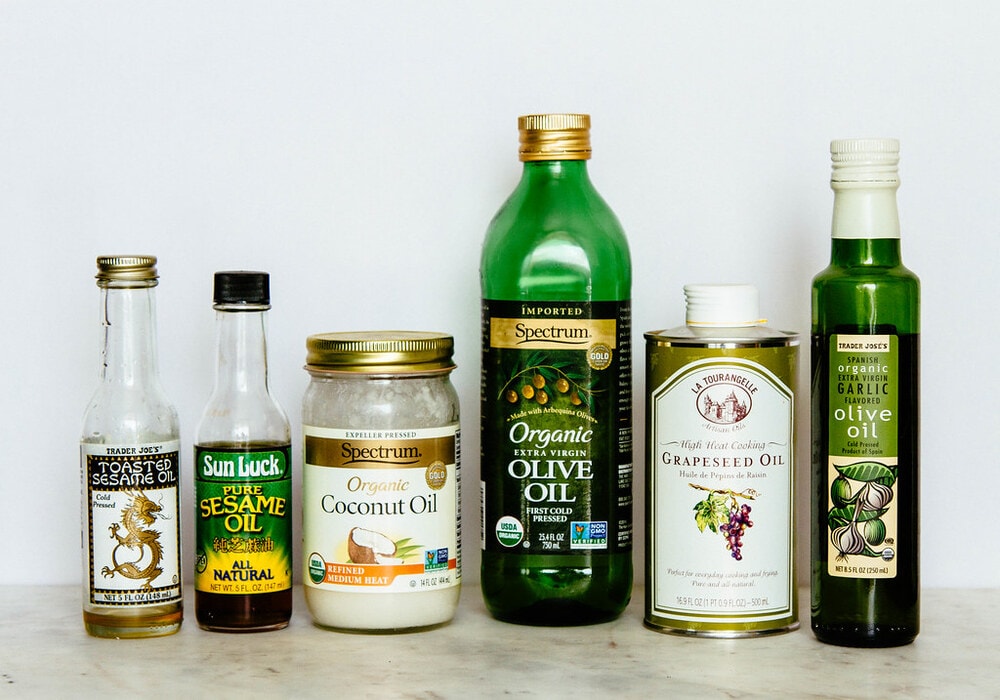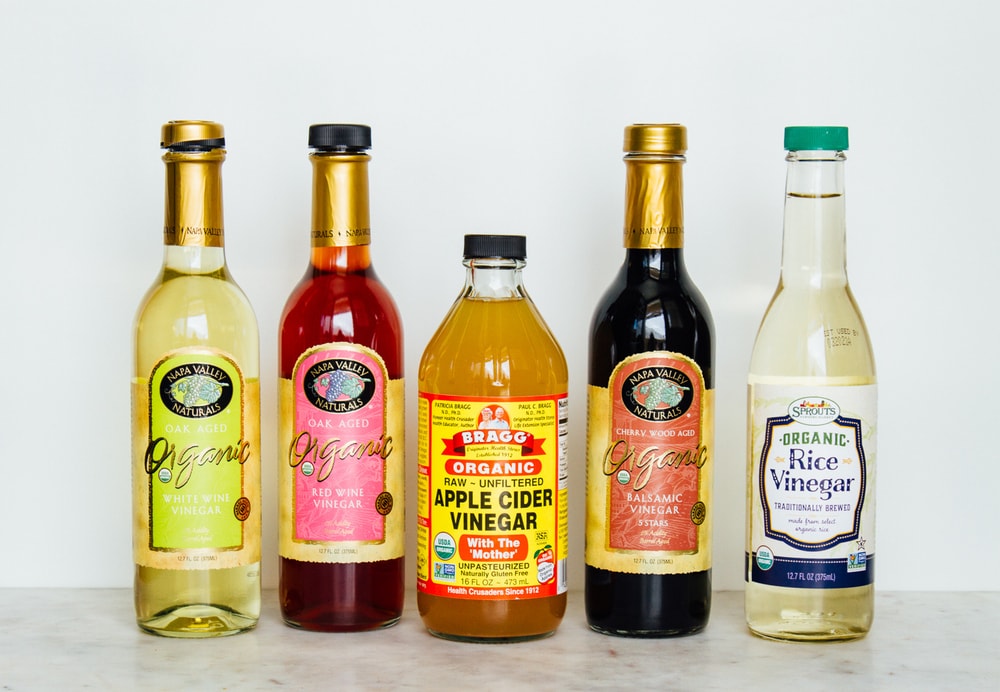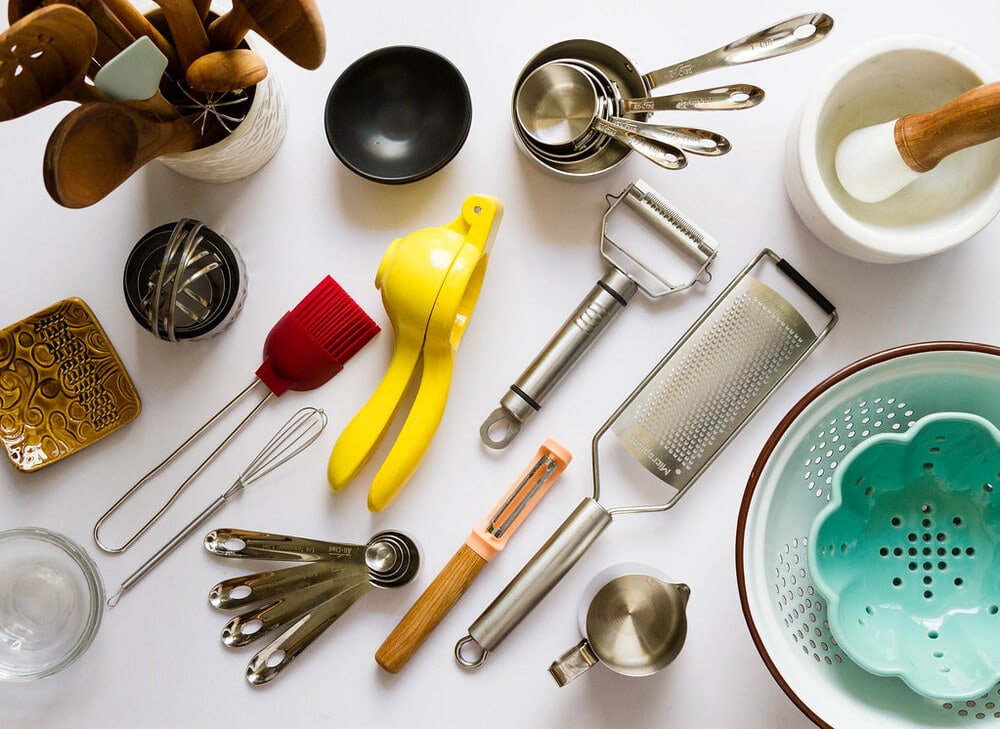My Vegan Pantry
Vegan Pantry Staples & Basics – Looking to stock your kitchen with whole food, plant based items? Let this comprehensive guide help you build a healthy, vegan kitchen pantry!

My Vegan Pantry & Kitchen Essentials
From pantry to cupboards and refrigerator, the following is a list of staples you may find in my vegan kitchen. All pantry and refrigerator items are part of a healthy, whole foods plant based diet. Most I have used and can be found within the vegan recipes, some items are used more frequently and noted in bold.
As for the equipment I have listed, these are the items that suit my kitchen cooking style and find to be useful. I hope this will encourage you as a guide for your own kitchen and any changes you’re looking to make.
Most items are easily accessible and reasonably priced, making eating a plant-based diet easy and affordable. It’s just a matter of pulling together meal plans and routines to suit your lifestyle. I hope you find lots of inspiration here at TSV!
Once you’ve gone through the list and would like ideas for specific ingredients, be sure to take a look at this list of Vegan Recipes By Ingredient!
Please note, this page contains affiliate links. We only recommend products we own, have tried and love or truly trust!
Pantry Essentials
bold = used most frequently
(GF) = Gluten Free (grain, pasta & flour)

Legumes
Legumes are the main proteins in a vegan diet. They are inexpensive and extremely versatile. Legumes are low in fat, high in protein and fiber, and carry essential micronutrients and phytochemicals to keep you at your best. Cooked fresh is best, but canned is great, too, for those who need a more convenient option.
From Hummus (which I eat almost every day), Veggie Burgers, tacos, burritos, Creamy Broccoli & Red Lentil Soup or Split Pea Soup, Black Bean, Broccoli & Avocado Salad, Lentil & Hummus Wraps, Italian Bean balls, to pasta dishes, all types of legumes can be used in various ways creating an endless supply of high protein, plant-based meals. See all Bean & Legume recipes on TSV!
- edemame – whole bean
- lentils (green, red, black)
- peas (split & whole)
- tempeh (organic non-gmo) eat in moderation
- tofu (organic non-gmo) eat in moderation
- black beans
- black eyed peas
- chickpeas (garbanzo beans)
- kidney beans
- pinto beans
- white beans (cannellini, navy, great northern)
- refried pinto beans
- refried black beans

Grains
Grains make for great fillers and main meals. Full of fiber and protein, fuel up with breakfast foods like this Cinnamon Oatmeal, DIY Muesli, and Overnight Buckwheat & Steel-Cut Oat Breakfast Jars. For the later meals, add rice of choice, farro, wheat berries, quinoa, etc. to complete your main meals. Many of these grains are gluten-free and should be used as part of a healthy diet.
- amaranth (GF)
- barley
- basmati & jasmine rice (GF)
- black rice – black pearl or forbidden (GF)
- brown rice (GF)
- buckwheat groats, raw pref (GF)
- bulgar wheat
- farro
- millet (GF)
- oats – steel-cut, rolled and quick (can be GF)
- quinoa (GF)
- wheat berries
- wild rice (GF)

Pastas
A good pasta dish is so comforting. My favorite pasta is the soba noodles with the quinoa, brown rice, and spelt next. I love making this Vegetable Lo Mein, Vegan Pasta Salad, Chickpea Noodle Soup, and good old-fashioned Pesto with Spaghetti. Each pasta has its place and keeps my pantry varied. And, for those worrying about getting enough protein, there’s even a high-protein pasta on the market these days!
- brown rice pasta (GF)
- mung bean threads (GF)
- quinoa pasta (GF)
- rice noodles (all sizes) (GF)
- 100% soba noodles (GF)
- spelt pasta
- whole wheat

Flours
If you love baking and making vegan pancakes, flour is going to be essential. Even if not, you’ll want to have some on hand for recipes that call for small amounts (like when thickening gravies or sauces). Spelt flour is my favorite, which bakes up beautifully, making for perfect vegan pancakes, muffins, cookies, and bread. Following spelt would be almond flour, buckwheat flour, and chickpea flour. I usually have about 4 flours on hand at any given time, all of which I store in the refrigerator to maintain maximum freshness.
- all-purpose gluten free flour (GF)
- almond flour & almond meal (GF)
- buckwheat flour
- chickpea flour (aka. garbanzo bean, besan, gram flour) (GF)
- cornmeal, grits, polenta (coarse or fine grind) (organic pref.) (GF)
- oat flour (GF) – you can easily grind your own using oats
- spelt flour
- whole wheat flour
- whole wheat pastry flour

Nuts & Seeds (all raw, except where noted)
All around, nuts and seeds are great as toppers and snacks. You’ll be amazed what you can make with them…i.e. tahini, cashew ricotta cheese or almond parmesan, nutmeats, nut butters, raw energy bites, no-bake cheesecake, etc. Having a nice assortment on hand will be a plus! I store mine in mason jars and keep them in the refrigerator for maximum freshness.
- almonds
- cashews
- chia seeds
- flaxseed meal
- hemp hearts – hulled hemp seeds
- pecans
- pepitas (pumpkin seeds)
- pistachios
- sesame seeds (white, black & toasted)
- sunflower seeds (raw or toasted)
- walnuts
Dried Fruits
Dried fruits are great as snacks and toppers, or mixed with nuts, like this Almost-Everything Trail Mix. Make raw truffles and desserts. You can also use dried fruit in this DIY Muesli Mix for a quick breakfast idea. Try adding dates to your smoothie for sweetness, like this Vanilla Date Smoothie. And I love taking dried mango slices on the go for snaking. As with nuts, a nice variety is good to have on hand. Dried fruits are fine stored in the pantry, but will keep longer in the refrigerator.
- apricots
- coconut flakes – all sizes
- cranberries – unsweetened or organically sweetened
- currants
- dates
- goji berries
- mango (unsulfured & unsweetened)
- raisins

Sweeteners
Natural sweeteners, my favorite and most used is pure maple syrup. Dates are a favorite as well to sweeten shakes, smoothies, and no-bake desserts. Coconut sugar has a wonderful caramel flavor, like brown sugar, that I love to bake with. If watching sugars, monk fruit sweetener is a great alternative.
- pure maple syrup
- coconut sugar
- coconut nectar
- date sugar
- organic pure cane sugar
- raw sugar
- dates
- Monkfruit

Spices
Spices are what will make your meals come alive. I love the simplicity of allowing my vegetables to shine, but sometimes I like to use many spices at once to really make a dish flavorful as possible. I have a large selection in my pantry, but find that I usually stick with a few key ones that I love. Use spices to take old recipes and change them up using a different blend. In some recipes, I prefer to use fresh herbs like basil, cilantro, and parsley, while the rest I’m happy to use dried. I recommend purchasing the freshest dried herbs and spices you can find for the best flavor!
- allspice
- basil (fresh pref.)
- bay leaves
- caraway seeds
- cardamom
- cayenne
- chili powder
- chipotle
- cilantro (fresh pref.)
- cinnamon
- cloves
- coriander
- cream of tartar
- cumin
- curry
- fennel
- garam marsala
- garlic powder
- ginger
- herbs de Provence
- himalayan salt
- lemon pepper
- marjoram
- mustard powder
- nutmeg
- old bay seasoning
- oregano
- onion powder
- paprika (sweet)
- paprika (smoked)
- parsley (fresh pref.)
- peppercorns (rainbow pref.)
- pumpkin pie spice
- red pepper flakes
- rosemary
- sage
- smoked salt
- summer savory
- tarragon
- thyme
- turmeric
- vanilla extract and/or vanilla beans
- white pepper
- za’atar

Oils
I try to use oils as sparingly as possible, but do keep a few on hand. And depending on what my dish is going to be will depend on my oil. When baking, I use light flavored olive oil and coconut oil, and sometimes I’ll switch it up with grapeseed oil. Sesame oil is used mainly for stir-fries and Asian-style cooking. When roasting or sauteeing vegetables, I use either olive, grapeseed, or coconut oil. Extra virgin olive oil is used for dressing and non-heat recipes.
- coconut oil
- grapeseed oil
- extra virgin olive oil
- olive oil (I prefer light flavored)
- sesame oil (regular and toasted)
- other nut oils (walnut, hazelnut, pistachio, etc.)

Vinegar
Vinegar adds a nice zest and tang to dishes, my favorite and most used is apple cider vinegar, which so happens to be the healthiest of them all. Vinegar is great in an assortment of recipes from stir-fries (for which I use rice wine vinegar), to salad dressings (all vinegar work here), and soups are great with a splash of balsamic. Vinegar also lends a hand when acid is needed, like making vegan buttermilk and cheeses.
- apple cider vinegar (unfiltered)
- balsamic vinegar (white and dark)
- champagne vinegar
- red wine vinegar
- rice vinegar
- white wine vinegar
Butters & Condiments
A good assortment of these will go a long way. You can do so much with all of these. From dressings, dips, sauces, spreads, and toppings, these are essentials.
- tahini
- almond butter (or your favorite nut butter)
- coconut butter
- vegan butter – I recommend Miyokos
- ketchup (organic)
- mustard (whole grain, dijon, brown mustard)
- 100% fruit jams & jellies
- sriracha
- chili paste
- tapitio (or other favorite vegan hot sauce)
- tamari, soy sauce or nama shoyu
- coconut amino’s

Canned & Bottes Goods
Of course, I want you to cook from scratch as much as possible, but I also realize that not everyone has the desire or time. This is where canned goods can be a great saver of time and energy. Keeping a stocked pantry with some of these essentials means you’ll be able to pull something together. Try to buy bottled items whenever possible and look for BPA-free cans.
- diced tomatoes (pref. fire roasted)
- sun-dried tomatoes
- tomato paste
- fire roasted green chilies
- coconut milk (full fat & light)
- bottled spaghetti sauce
- baked beans
- salsa
- enchilada sauce (green or red)
- curry paste (red is what I have)
- mirin
- olives (green and/or black)
- greek pepperoncini, sliced or whole
- unsweetened apple sauce
- bottled lemon/lime juice (in case I don’t have lemons)
Packaged and Other
More base essentials to have on hand to throw together with fresh produce or bake up into something wonderful.
- dried shiitakes or wild mushrooms
- wakame (sea kelp)
- nutritional yeast (pref. fortified with vitamin B-12)
- tortillas (corn or whole wheat)
- breads (I love Dave’s Killer Bread)
- rice paper sheets
- nori wraps/sheets
- bouillon cubes or vegetable broth base
- hemp protein powder (and other vegan protein powders)
- cocoa/cacao powder
- cocoa nibs
- Enjoy Life semi -weet mini chocolate chips
- Ghirardelli semi-sweet chocolate chips
- corn starch, potato starch, tapioca flour or arrowroot flour (for thickening)
- baking soda
- aluminum-free baking powder
- green tea & yerba mate
- instant espresso (for baking and chocolate goodies)
- popcorn kernels
Refrigerator Essentials
You’ll find these trusted items in my refrigerator. Almond milk and miso are my most used.
- unsweetened, plain cashew or almond milk
- non-dairy yogurt
- miso
- tofu
- tempeh
Freezer Items
- frozen fruits
- frozen vegetables
- leftovers :)
Things I keep In My Refrigerator After Opening
Some are quite obvious, while others are not so and I keep them in the refrigerator for maximum freshness.
- flours
- nuts & seeds
- maple syrup
- ketchup
- mustard
- tahini
- curry paste
- jams & jellies
- almond and nut butters
- coconut aminos
- mirin
- baking soda/powder
- lemon juice
- applesauce
- bottled lemon/lime juice
Long Lasting Produce
Produce that will keep for up to 2 weeks (great for planning ahead) in the refrigerator:
- carrots
- celery
- brussels sprouts
- red and green cabbage
- bell peppers
Produce that will last up to 2 weeks if kept in a cool, dry place, pref away from too much light:
- onion
- garlic
- shallots
- potatoes
- sweet potatoes
- tomatoes
- hard skinned winter squash – butternut, acorn, spaghetti, delicata, and pumpkin, kabocha, etc.

Kitchen Tools
The kitchen tool list may be a bit overboard and some obvious. Once I started it, I couldn’t stop. Of course, you don’t need all these kitchen tools and can make do with some of the basics. This is what’s in my kitchen after a few years of accumulation and is noted here because they are useful to me. Hopefully, this can be a good guide to get you started or think of something you may have overlooked.
- food processor
- blender
- immersion blender
- small blender (Nutri Bullet or Magic Bullet)
- vegetable peeler
- julienne tool
- spiralizer
- microplane
- mortar & pestle
- tea kettle
- silpat
- large carbon steel wok (w/ wooden handles pref. on both sides for easy handling)
- stock pot (great for large batches of soup and stove-top popcorn)
- cast iron skillet & griddle (griddle pref. smooth on one side & ribbed on the other)
- mason jars (all sizes) (perfect for the organizer and to take soups, smoothies, etc. on the go)
- basic measuring spoons (1/4 t, 1/2t, 1t, 1T)
- basic dry measuring cups (1/4, 1/3, 1/2, 1 cup)
- liquid measuring cups (I have a 2-cup & 4-cup)
- whisk, small and large (I use my little one all the time for sauces and dressings)
- tongs
- ladle
- assorted wooden spoons
- mixing bowls (small to large)
- silicon mitts
- silicon brush
- small silicon bowls (great for drizzling thick sauces and icings)
- potato masher
- grater
- can opener
- kitchen scissors
- bamboo steamer
- serrated bread knife
- good chef knives & sharpener (I have three sizes: paring, utility & chef)
- cutting board (various sizes are helpful)
- colander (small to large)
- fine mesh strainer (small to large)
- oversize griddle/pan spatula
- rubber spatula
- mineral oil (for maintaining cutting boards and wooden utensils)
Essential Books
- The Vegetarian Flavor Bible (for pairing flavors)
- The Wellness Encyclopedia of Health & Nutrition (an excellent book filled with how to select, store, prep, and cook ingredients, as well as nutritional info)
- Prescription for Nutritional Healing (2023 revised and updated version to keep you healthy and at your best)
added suggestions by others
- crock pot (perfect for the busy person…set it and forget it)
- rice cooker
- Instant Pot (an all-in-one, fast-cooking appliance)
- stand-alone mixer (attachments are a plus )
So there you have it! I may have missed a thing or two in its entirety but this is a pretty solid list of things to work within a vegan/plant-based kitchen. Add in some fresh produce to the mix and you can whip up some pretty amazing snacks, meals, breads, and desserts. Easy, peasy, vegan! Cheers :)
